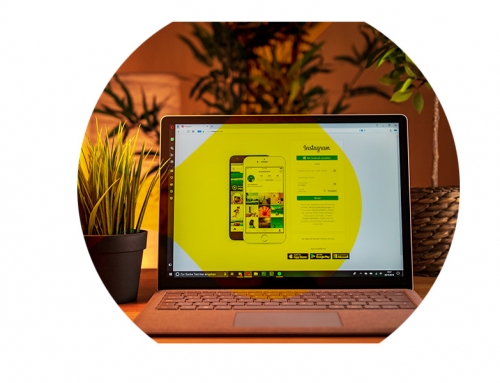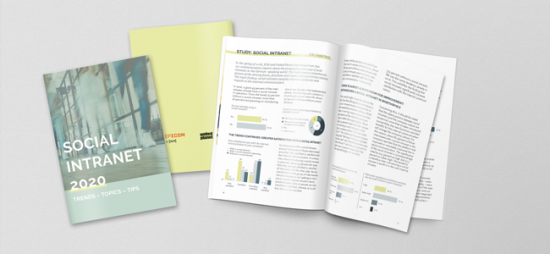We talked to Eric Jaffe, Senior Manager of Employee and Executive Communications at Microsoft, about Microsoft’s approach to employee communications, the demands upon the area of internal communications, social networks and evolving trends in the coming years.
Microsoft develops internal communication solutions for other companies. Is the customer feedback regarding the latter also useful for your own approach to communications?
We spend a considerable amount of time across the team meeting with customers and partners who are interested in learning how we approach employee communications, how we leverage our own technology, and where we see the function heading. I tend to get an equal amount of value out of these sessions. It’s interesting to hear where other organizations are having challenges and to think about how we approach similar issues—if we’re having success, examining why, and if not, leveraging the discussion with the customer to think about new approaches or ideas.
How is internal communications structured internationally? Are there independent communication departments in the individual countries, or is there also a global IC that defines the strategies?
Local employee communications teams report into their local subsidiaries. While the global employee communications team oversees communications that go out to all employees, our focus is to empower the community of communicators around the world. We focus on providing an employee communications framework that every team can plug into and make their own to account for local differences and needs. We also work to provide the community with ready-to-use tools and resources that aid them in their efforts.
Countries and cultures each have their own particularities that need to be taken into account in communications. How do Microsoft’s strategies differ in this respect, and how is an adequate approach ensured?
In a model like ours where the local employee communications teams report into their country’s leadership, they are well positioned and aligned to consider and prioritize their local needs. Our focus is on providing our global employee and executive communications community with a set of core and common tools that they can leverage. Some teams may rely on certain ones more heavily than others and vice versa based on their local needs and communications priorities.
Do you believe that Microsoft thinks differently about internal communications than other companies? If so, how does this manifest itself, and why?
As I mentioned earlier, the team gets the opportunity to speak to a lot of our customers who span different industries and segments. Most customers are thinking about employee communications much the same way we are. They are seeing the same trends and pressures and have a clear vision of what modern employee communications looks like. What tends to vary is how far along they are in making that vision a reality. Often, it’s due to a lack of basic infrastructure—things like a modern intranet or the ability to live stream a video webcast. These issues are relatively easy to solve through the technology and solutions that Microsoft can offer to customers. What tends to be a larger and more complex issue for organizations to solve is the organizational readiness, or culture, that is required for a modern communications program to thrive—things like leadership being comfortable with greater transparency in communications or embracing real two-way dialogue.
The one area I don’t hear as many organizations discuss, and perhaps differentiates our approach a little bit, is our focus on leader communications. We know from our internal data that leaders and managers are one of the most important and desired ways for employees to receive information. We put a lot of emphasis on this area of our program in terms of ensuing we provide them with the right tools and resources to make them effective communicators.
Have the demands upon the area of internal communications increased recently? If so, why?
Yes, I think so for a few reasons. First, no longer is our job defined by what happens strictly within the walls of work. We are influenced by an increasingly complex global external environment. What once stayed external, and outside of the company, is now squarely on the minds of employees and part of the employee communications landscape and our roles.
Second, the skills required to be successful have changed and continue to evolve, as has the expectations of leadership. It’s no longer enough to be a skilled writer. You need to be able to tell a connected and engaging story and be able to do so across multiple mediums—be that in long form, a video, an in-person event, or even in 140 characters. There is also an increasing need to be data driven and data fluent—to really understand how to measure, collect, and interpret data.
Last, there’s the continued need to grow and adapt as platforms, tools, norms, and communications preferences change. What worked in the past may not work in the future or be the right way to engage your changing evolving employee base. How are you going to keep your employee communications program current, ensure that you’re most effectively engaging employees, and doing so in the ways that they want to be reached?
What are the biggest challenges you are currently facing in your work?
In recent years, as the company has experienced significant change and transformation, we’ve become increasingly focused as a team on four things. Creating alignments across distributed teams, creating a more inclusive culture, helping employees find knowledge and information faster, and working to foster better employee engagement.
How are change processes received by Microsoft employees, and how does this correspond to the corporate culture?
Change is difficult. It’s well documented, and we’re not immune to that inertia. When we have large changes at Microsoft, we try to take a very thoughtful and principled approach. We focus on being transparent and providing the data and rationale behind the change. We look to meet employees where they are and acknowledge that everyone is at a different point on the change continuum. We always aim to provide ample time before any change goes into effect and to implement listening systems and channels for two-way dialogue.
In which way should social networks be used? What are their specific advantages, and which basic conditions are needed to make them work?
At Microsoft, we’re big believers in the power of employee advocacy. Part of our employee communications mission is around enabling employees to be advocates for Microsoft, and we know that in today’s world that largely means across social media. As we’ve invested in this area, we have recognized the need to provide clear guidance and encouragement to employees to share on social. Without clear guidance and encouragement, most employees are often left confused about what is appropriate or safe to share. We have integrated social sharing across several of our key communications platforms and channels, including on our Microsoft SharePoint intranet and in a weekly all-employee email. By integrating sharing across these very visible channels, we’re signaling to employees that we want them to share and are pointing them to content that they know has been approved and is safe to share.
In addition, we see social as being a key element of an executive’s communications platform. All the third-party data we’ve seen indicates that business leaders are seeking thought leadership from company executives. We have a very active group of executives across all areas of Microsoft who do a great job on LinkedIn and the other social media platforms expressing a unique point of view, adding value to relevant conversations, and listening and connecting with their networks.
What will the development of internal communications be like in the coming years? Do you see particularly big trends for the future?
I think we’ll see an increase in personalization, targeting, and segmentation across the employee communications space, and much of it will be driven by AI. This trend is something that readily exists in our everyday lives as consumers but hasn’t really taken off yet in the employee communications space. Almost every consumer website has some AI-driven personalization, yet most intranets are one size fits all. As employee communications tools continue to develop and evolve, this will be one of the trends. For example, the latest version of Microsoft SharePoint has this type of AI-driven intelligence included as part of its standard web parts, customizing an employee’s feed with relevant or popular documents, articles, and colleagues.
More than ever, employees are wanting a voice, and organizations are increasingly going to need to listen and drive meaningful two-way conversations in real time. With employees sharing across a wide variety of platforms, including social media, leaders will need to become more accustomed to listening, asking for feedback, creating opportunities for a two-way dialogue, and responding at scale. At Microsoft, tools like Yammer, Teams, and Live Events make it possible for leaders to easily listen and respond at scale when needed.
Traditional internal communications have had a top-down focus. What do our employees need to know? In the coming years, we’ll see an ever-stronger shift toward more peer-to-peer communications (community communications), combined with upward communication that taps into the wisdom of the crowd. As much as employees will look to leaders for guidance, you can’t underestimate the power of crowd-sourced data and perceptions.
Last, I think the function of employee communications is going to continue to rise in importance as external factors continue to increasingly make their way into organizations. As this trend continues and accelerates, employee communications functions are going to be an increasingly valued partner. The key will be for employee communications functions to be ready to handle these new pressures and have the right systems and strategies in place.
About the interviewed person / interviewer
 Eric Jaffe is Senior Manager of Employee and Executive Communications at Microsoft. He has spent the past two decades focusing on employee communications and advocacy space, spending the past 9 years at Microsoft. In his current role, Eric is responsible for Microsoft’s major employee communications channels, employee advocacy and executive social best practices. Prior to Microsoft, Eric worked at T-Mobile and IAC/InterActiveCorp.
Eric Jaffe is Senior Manager of Employee and Executive Communications at Microsoft. He has spent the past two decades focusing on employee communications and advocacy space, spending the past 9 years at Microsoft. In his current role, Eric is responsible for Microsoft’s major employee communications channels, employee advocacy and executive social best practices. Prior to Microsoft, Eric worked at T-Mobile and IAC/InterActiveCorp.

Désirée Böhm works at SCM – School for Communication and Management as an editor for various topics related to internal and external communications. She is also responsible for the topic of international internal communications and organizes various events. She studied hispanoamerican literature and German studies.









